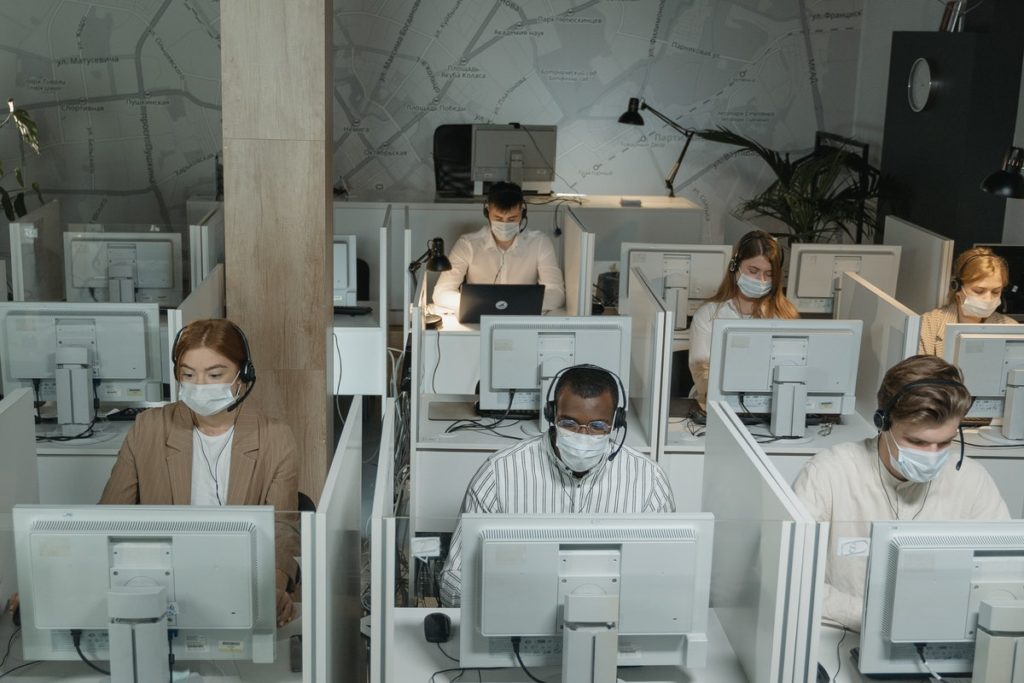Today, many businesses have found ways to adapt to the new normal that the pandemic brought. They were able to keep serving their customers by expanding their products and services online. And things got even better once the quarantine restrictions loosened. Businesses, even those that were classified as “non-essential” started opening again provided that they follow the health security protocols put forth by the governing authorities. But the struggle didn’t stop there. Many businesses still faced one challenge after another.
These are the challenges that they’re facing amid the health safety measures against COVID-19 and how to face or even overcome them.
Affected Customer Interaction
Very early on in the pandemic, the Centers for Disease Control and Prevention (CDC) stated that the most effective way to spread the coronavirus is through the transmission of respiratory droplets. This is why the six-foot social distancing protocol was enforced at the start of the pandemic.
This is also why shields made from plastic or plexiglass are required to stand as barriers between customers and staff members. The authorities implemented this rule for businesses. It’s difficult to keep track of the people coming and going from these establishments so the plastic shields are a quick and easy solution to prevent the transmission of the coronavirus.
But these shields are also affecting one very important aspect of business. And that is customer interaction. Because there’s a plastic shield between the customer and the staff member, they experience a hard time speaking to each other. Thus, food and beverage orders get errors. There are mistakes in business inquiries. Both parties might even think that the other is being rude to them.
One way to overcome this issue is to promote the online services of your business. This way, there will be a conflict-free interaction between customers and businesses. Plus, we’ll also promote the health safety of the customers.
Environmental Initiatives

Before the COVID-19 pandemic shook the world, many businesses have started embracing sustainability. They’ve planned and implemented various green initiatives, lowered their electricity and water consumption, and decreased their carbon footprint by sourcing their ingredients and materials locally instead of overseas. And they — especially the dining establishments — have resorted to using reusable utensils and other resources.
But the COVID-19 pandemic has impacted these, especially the use of reusable items. In the interest of public health, many restaurants went back to the use of plastic utensils and food storage. It’s a much more effective way of controlling the spread of the coronavirus. But this means that businesses are producing much more waste. These plastic utensils will only end up in landfills or oceans.
But there are ways to lessen our waste without putting public health at risk. For one, we have to use much sturdier materials. Instead of using a plastic cover as a shield between us and our customers, let’s use an acrylic shield for tabletops instead. This way, it would last much longer, and we won’t be trashing plastic covers every now and then. Another good solution to using disposable items and using recycled ones. For example, we can use plastic utensils made from recycled polystyrene.
Additional Expenses
Additional expenses are another key impact that the COVID-19 pandemic made on the day-to-day operations of businesses. In exchange for reopening our businesses, we have to adhere to the health safety protocols that the authorities are enforcing. Apart from the plastic shields, we also have to sanitize every inch of our establishment on a regular basis. We have to use the right sanitization products that are approved by the authorities.
Such initiatives come with a hefty price tag. They mean that we have to find room in our budget for the cleaning materials and the labor. The hard part is that we understand why we can’t compromise these things. They are, again, in the name of public health safety.
But what we can do is cut costs elsewhere. We’ll have to master energy efficiency, review our investment and expansion plans, and even reduce our hours.
By this point, we’ve all heard about the COVID-19 pandemic’s impact on business in different sectors. Business owners were forced to lay off even their best staff members simply because they couldn’t afford their time and labor anymore. Restaurants and retail stores were forced to close their doors for good. It’s because they lost foot traffic due to quarantine restrictions, customers, and revenue. Thus, they couldn’t afford to stay open anymore.
But we’ve also heard a lot about the inspiring stories of many businesses. Many were able to finally reopen their doors. But now, what we need to understand is how the pandemic is affecting our day-to-day business operations. Thus, we’ll know how to overcome the challenges.
